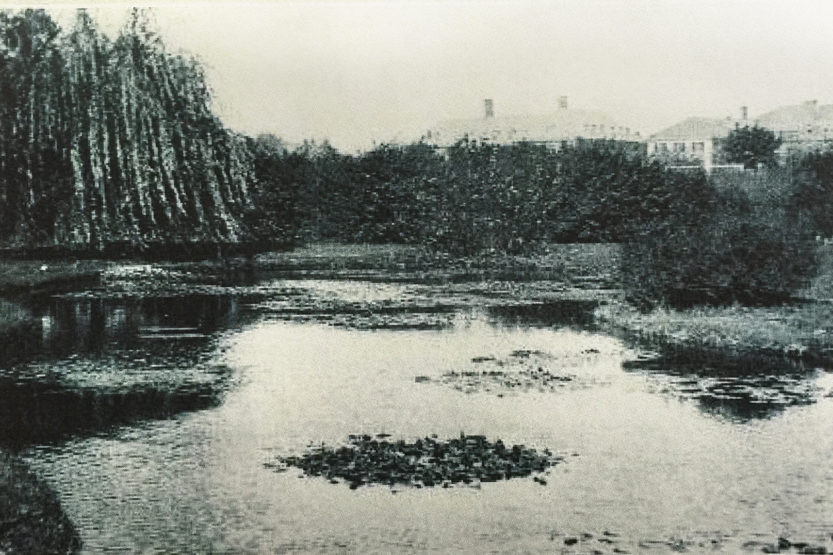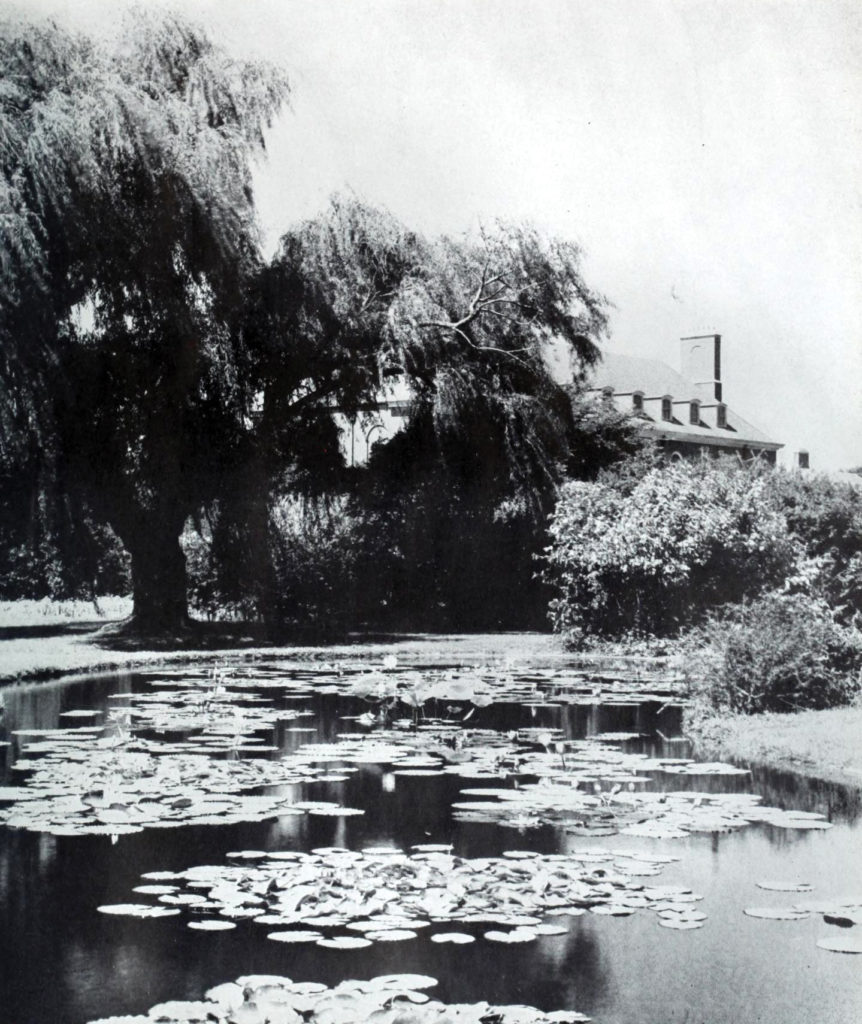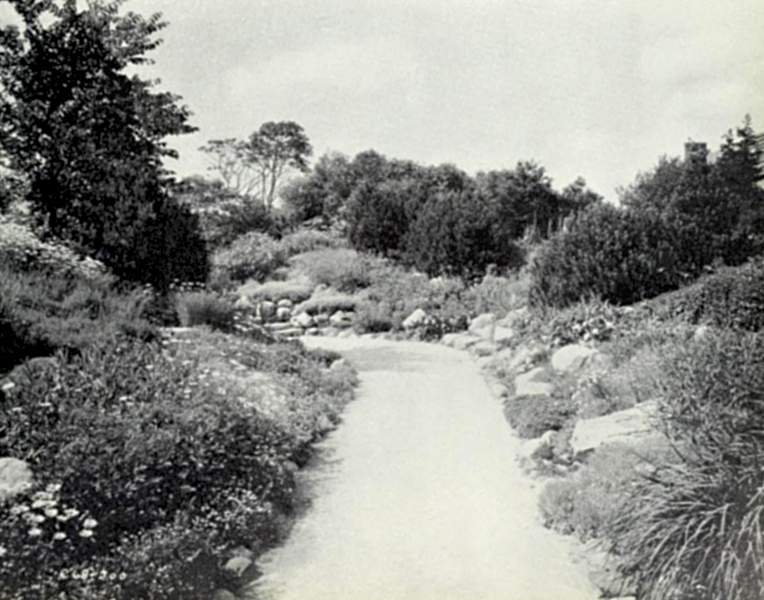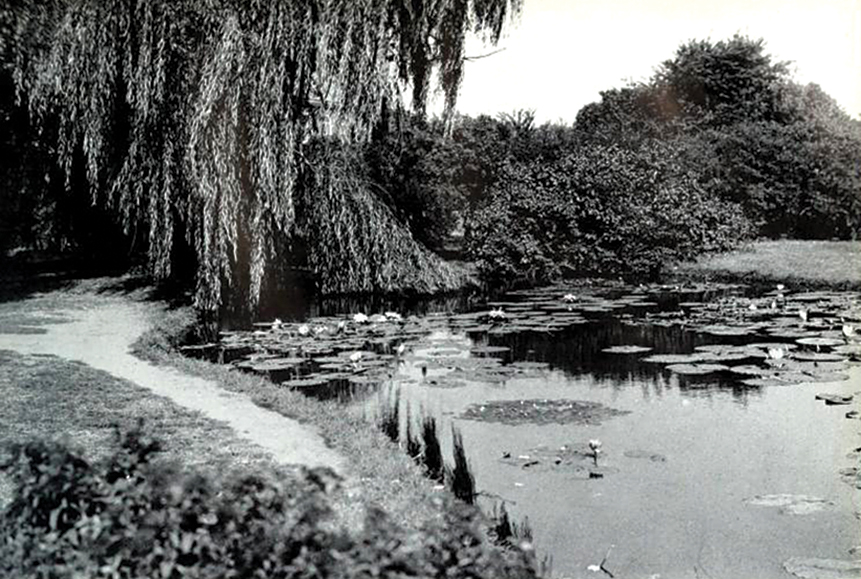Memory Lane: Paradise Lost
 Lily Pond, 1927. (Image courtesy of "Illio" 1927)
Lily Pond, 1927. (Image courtesy of "Illio" 1927) When he was a youngster, Roger Ebert, ’64 MEDIA, whiled away many an idyllic summer hour on the banks of UI’s Lily Pond, catching tadpoles in a Mason jar. By the time he was a student at the University, he saw that Lily Pond had been paved over. Ebert mourned the loss of his childhood “summer sanctuary,” and editorializing in the Daily Illini, vigorously campaigned for a new Lily Pond.
“The fact is, the Campus needs a Lily Pond,” Ebert wrote in 1966. “Once it had a Lily Pond, but on a black day in history, a decade or so ago, the Campus Master Plan swept forward and filled Lily Pond in.”
Ebert argued that a lily pond was needed to bring “to our flat and dry campus, with its landscape-by-slide-rule, a spot of informality, a nook of cool relief for the eyes, a refuge from the monotonous heat of summer.”
Laid out in 1917, Lily Pond and adjacent Rock Garden were major features of an ambitious landscaping scheme designed to make the then-South Campus “the beauty spot of the University.” The bean-shaped Lily Pond—with its tranquil waters, multi-colored water lilies, gleaming goldfish and croaking frogs—quickly became a favorite destination for sightseers and shutterbugs. In 1934, James Hutchinson, an assistant in the UI Division of Floriculture, judged the pond to be “the most popular spot on the campus—especially for the boys and girls with their cameras.” In Hutchinson’s view, spring did not officially arrive on campus until sometime in April when Lily Pond was filled with water and stocked with the hundreds of goldfish that had swum the winter away in the toasty confines of a nearby greenhouse.

As a young boy, Roger Ebert, whose father was a UI electrician, spent his summer days hanging out at Lily Pond and catching tadpoles. The pond in 1947 (above) and adjacent Rock Garden (below) were part of a major landscaping initiative undertaken to beautify the then-South Campus in 1917. Seventeen years later, James Hutchinson, an assistant in the UI Division of Floriculture, judged Lily Pond the most popular spot on campus. (Image courtesy of “Illio” 1947)
In 1951, Robert S. Chamberlin in the Physical Plant Dept. deemed the Rock Garden to be in a “deplorable condition” and proposed, among other alternatives, that it be eliminated and regraded as a grassy area. This suggestion was ultimately adopted. Lily Pond suffered a similar fate. Briefly surviving, thanks to a public “howl” in 1954, the cement-lined pond succumbed four years later when it was filled in and replaced by a lawn. Today, the Allen Hall parking lot occupies the spot of Ebert’s much-lamented “summer sanctuary.”
After a years-long editorial crusade, Ebert finally got a new Lily Pond of a sort in May 1967, thanks to the resourceful men of Garner Hall 3E. The “Six Pack” denizens scrounged up eight bucks to purchase a blue plastic kiddie pool, which they then dragged to the Quad and filled with H2O from Noyes Lab via a “bucket brigade” of helpers.
Ebert, no longer a UI student, was present on that sunny and unseasonably warm May day to witness this semi-realization of his dream. Dedicating the temporary structure, Ebert flung a bouquet of lilies into the makeshift “pond.” Student Body President Patsy Parker followed the bouquet into the pool, tossed in by a bunch of boisterous undergraduates. A couple of hours later, the new and not-so-improved “Lily Pond” was no more—hauled off the Quad by order of Dean of Students Stanton Millet.
So much for Ebert’s restored Lily Pond. It was better than nothing, we guess



